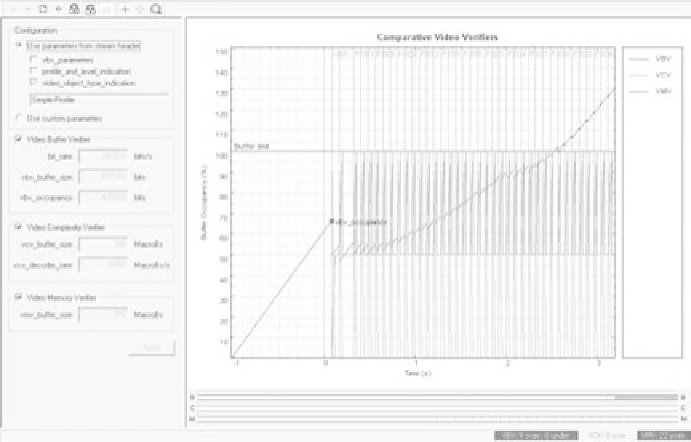Image Processing Reference
In-Depth Information
Figure 14-9
VBV buffer-occupancy analysis. Source: courtesy of Tektronix.
Lighting changes in the studio
●
Dissolves between scenes
●
These situations cause a massive increase in the bit rate required. If you have been
unable to fill the buffer sufficiently, you may find that the available bit rate is insufficient
to compress that section of video without introducing artifacts.
Figure 14-10 shows the effect of a buffer filling up as presented by a VBV analyzer
that is able to evaluate the decoder capabilities.
If your encoder is well designed it will note the sections of video that require additional
bit rate during the first pass of a two-pass encode. The encoder will wind down the bit rate
prior to that scene. Then it can increase the available bits to allow the encoder to create a more
complex description of that video segment without going beyond your maximum bit-rate
settings. This measurement and compensation takes place in the VBV. Your editing system
may have placed compression markers on cut and transition boundaries to facilitate this.
Figure 14-11 shows the same analysis as before, but in this case the bit rate has been
throttled to allow the decoder time to consume the buffered content.
14.7
Joined-Up Systems
One of the useful features of Final Cut Pro is the insertion of compression markers when-
ever an edit or transition occurs. The Apple Keynote presentation application also marks
its slide boundaries and transitions in an exported movie.


Search WWH ::

Custom Search